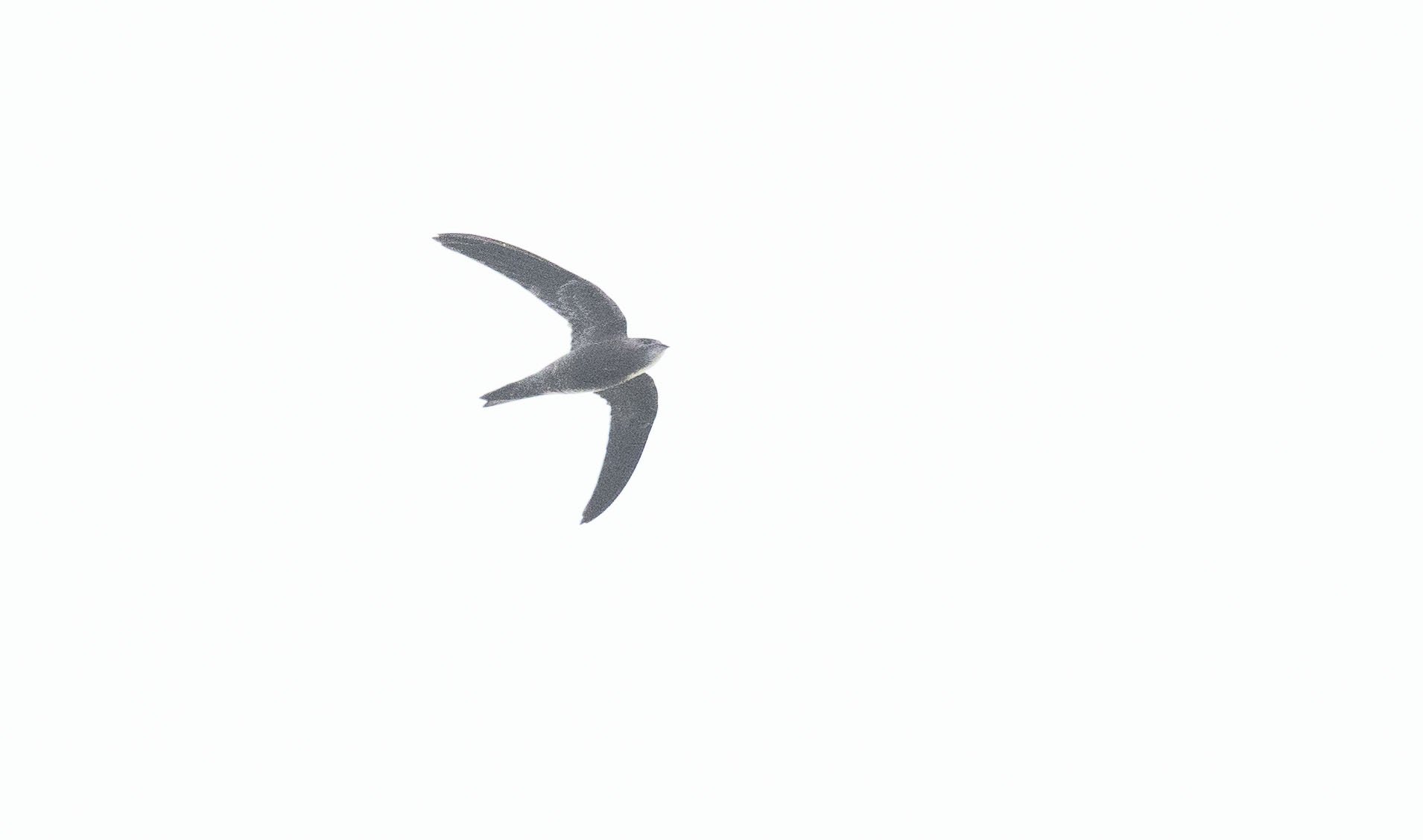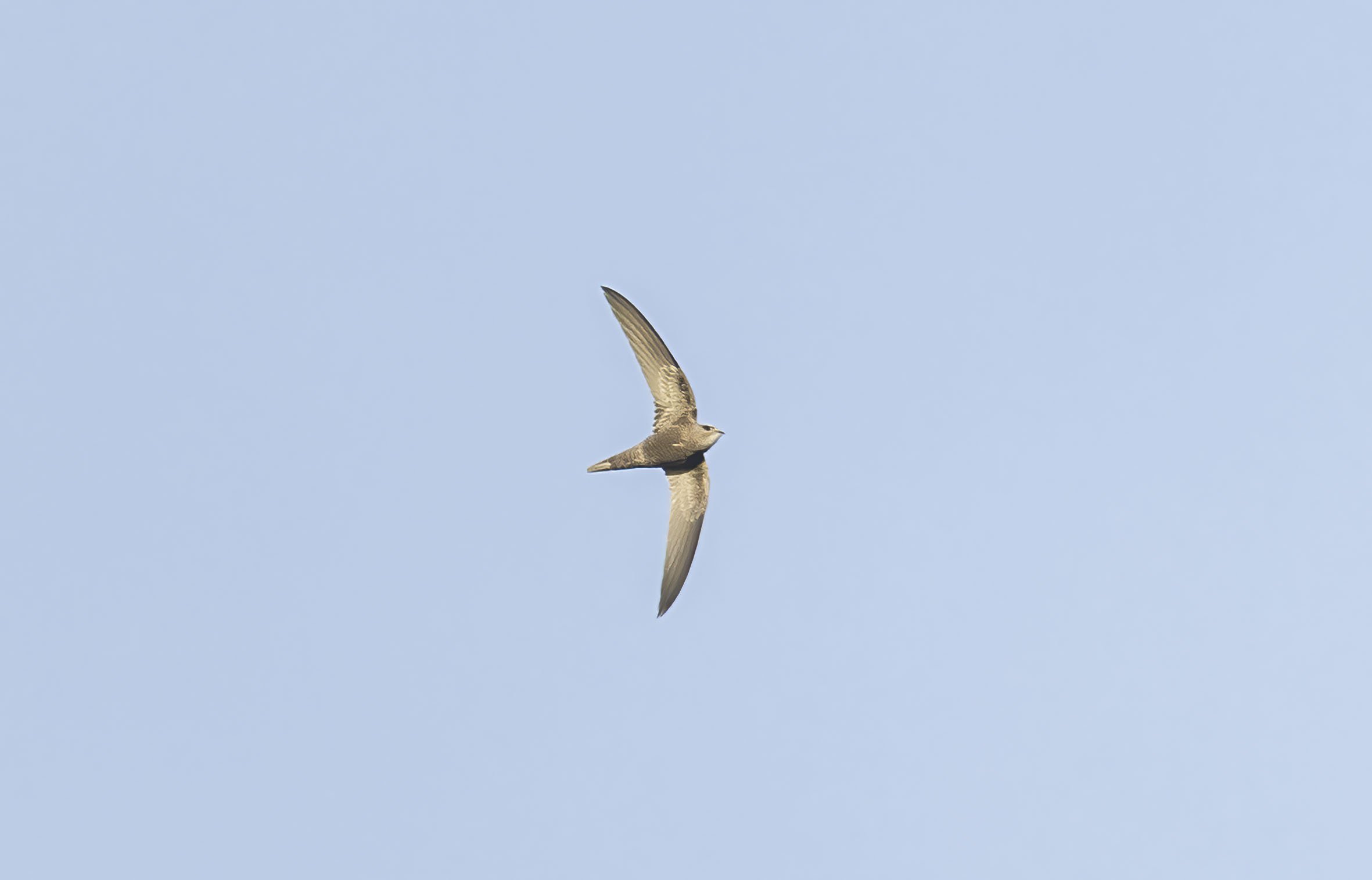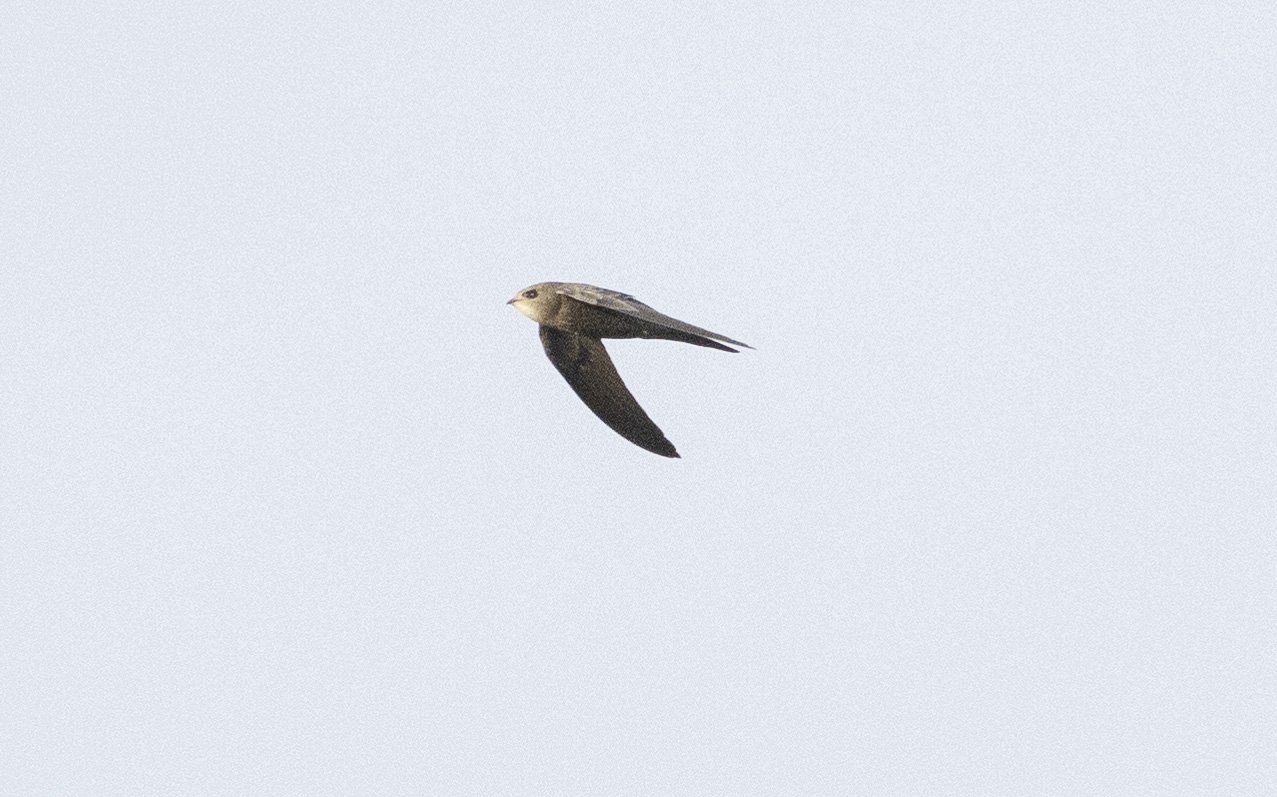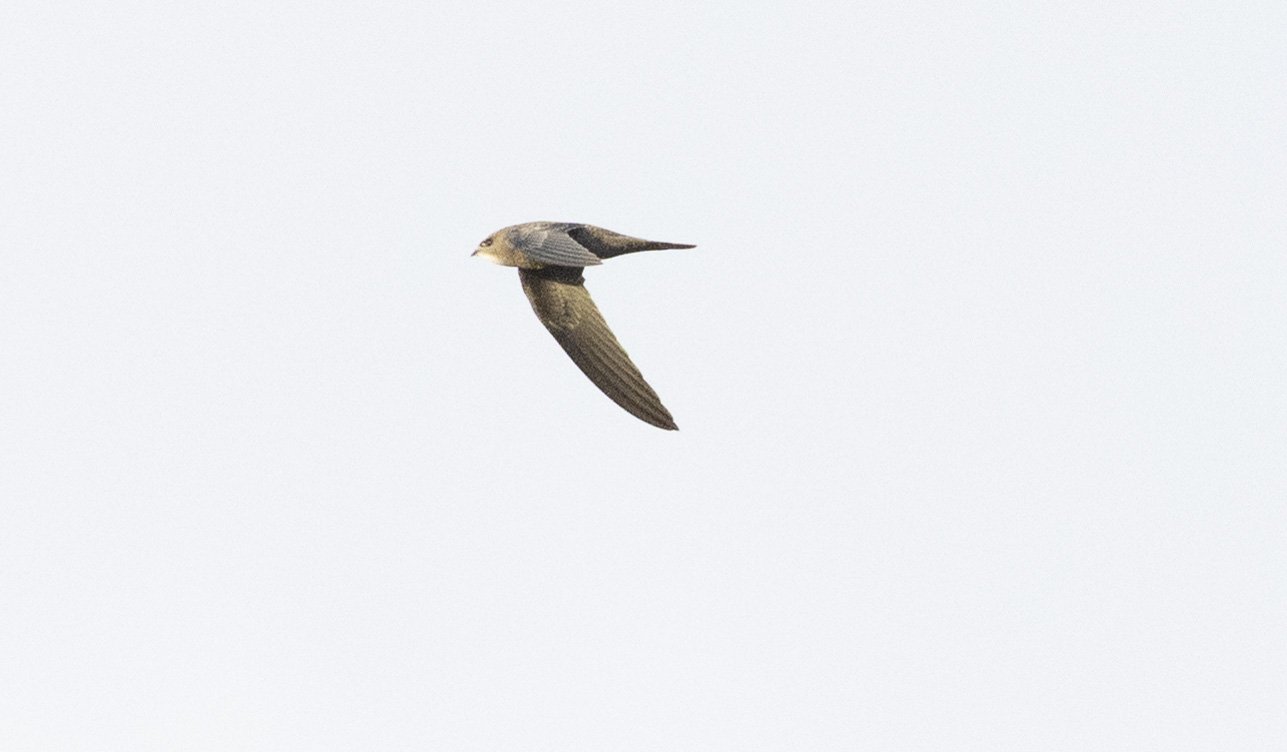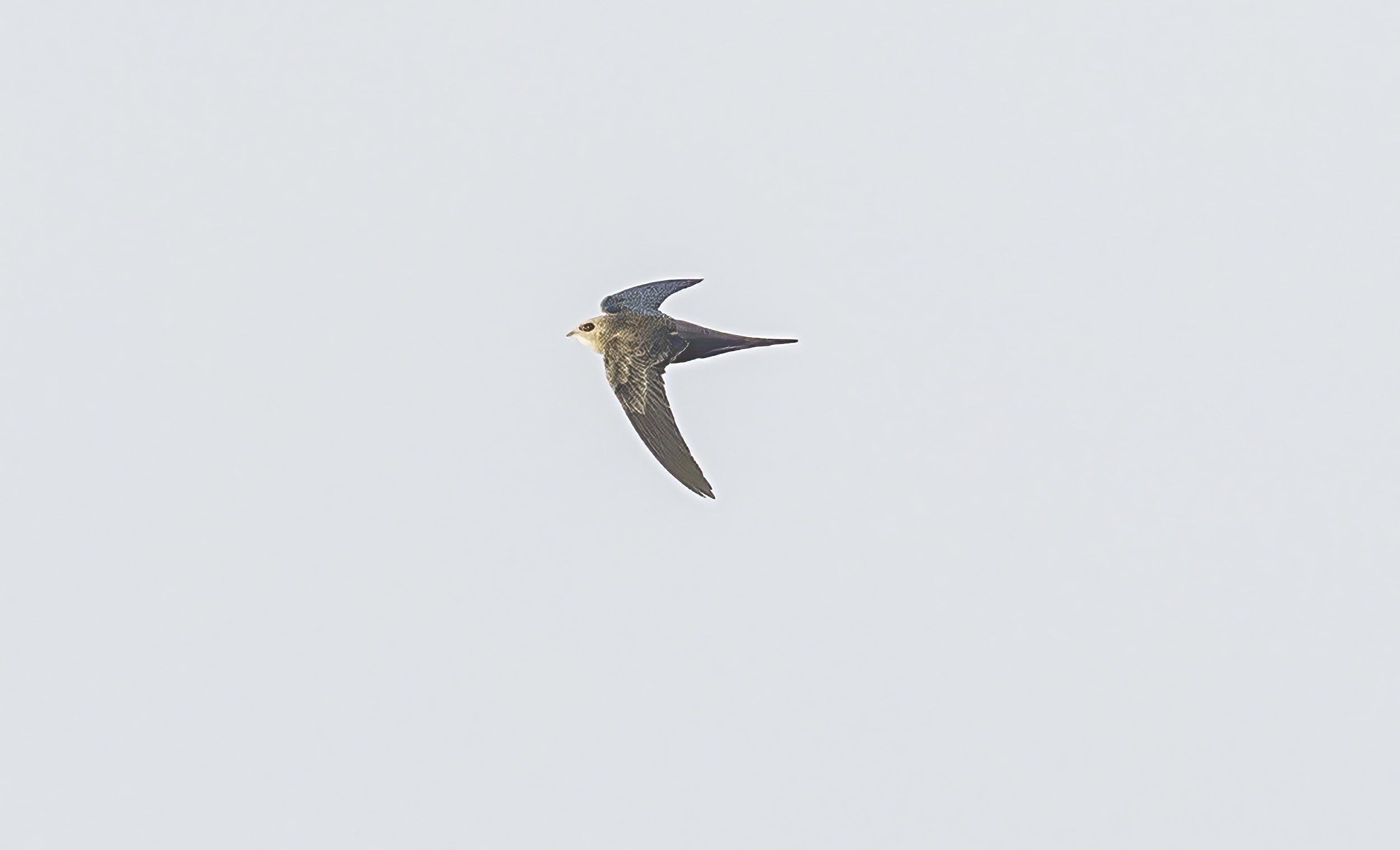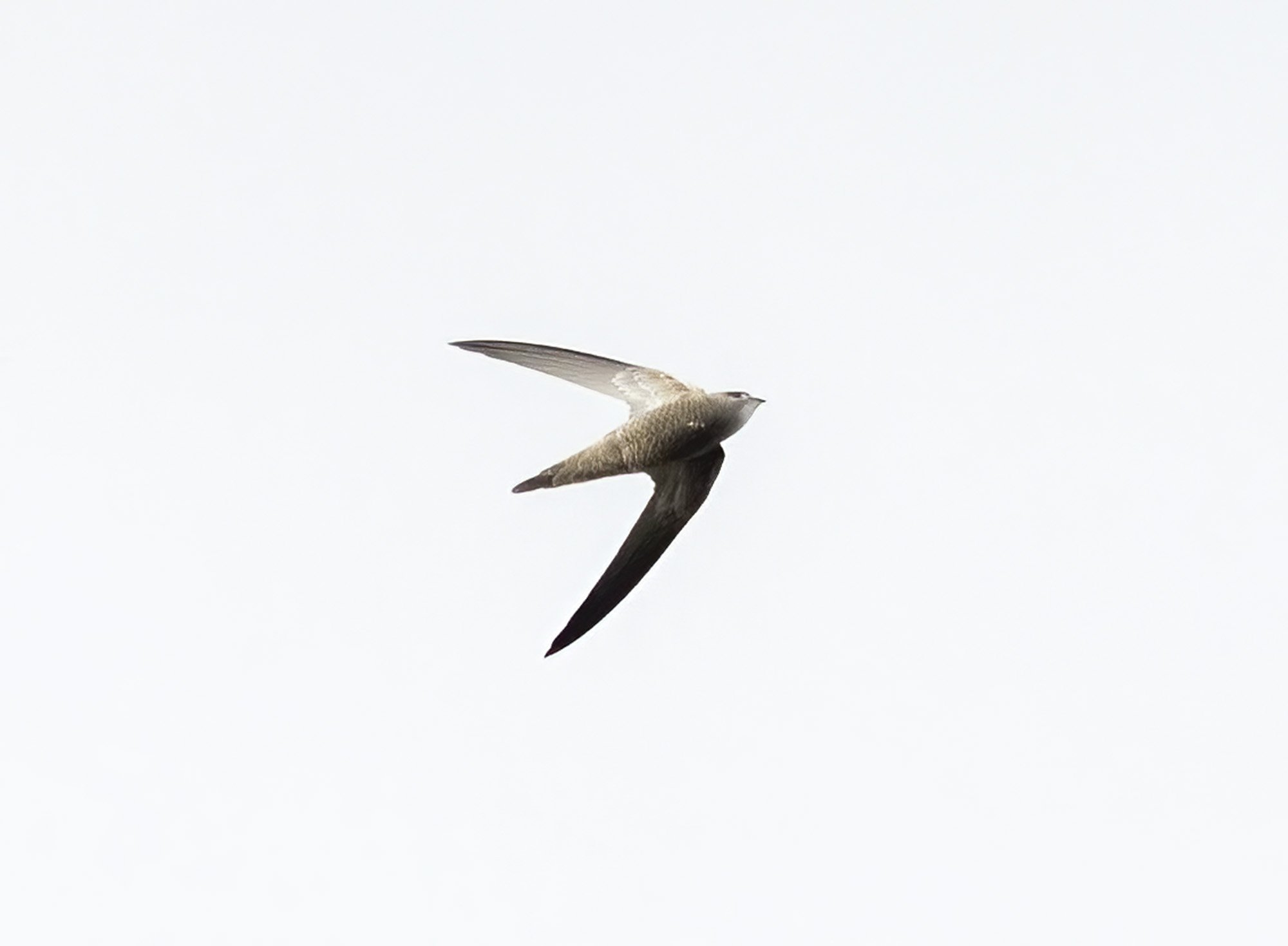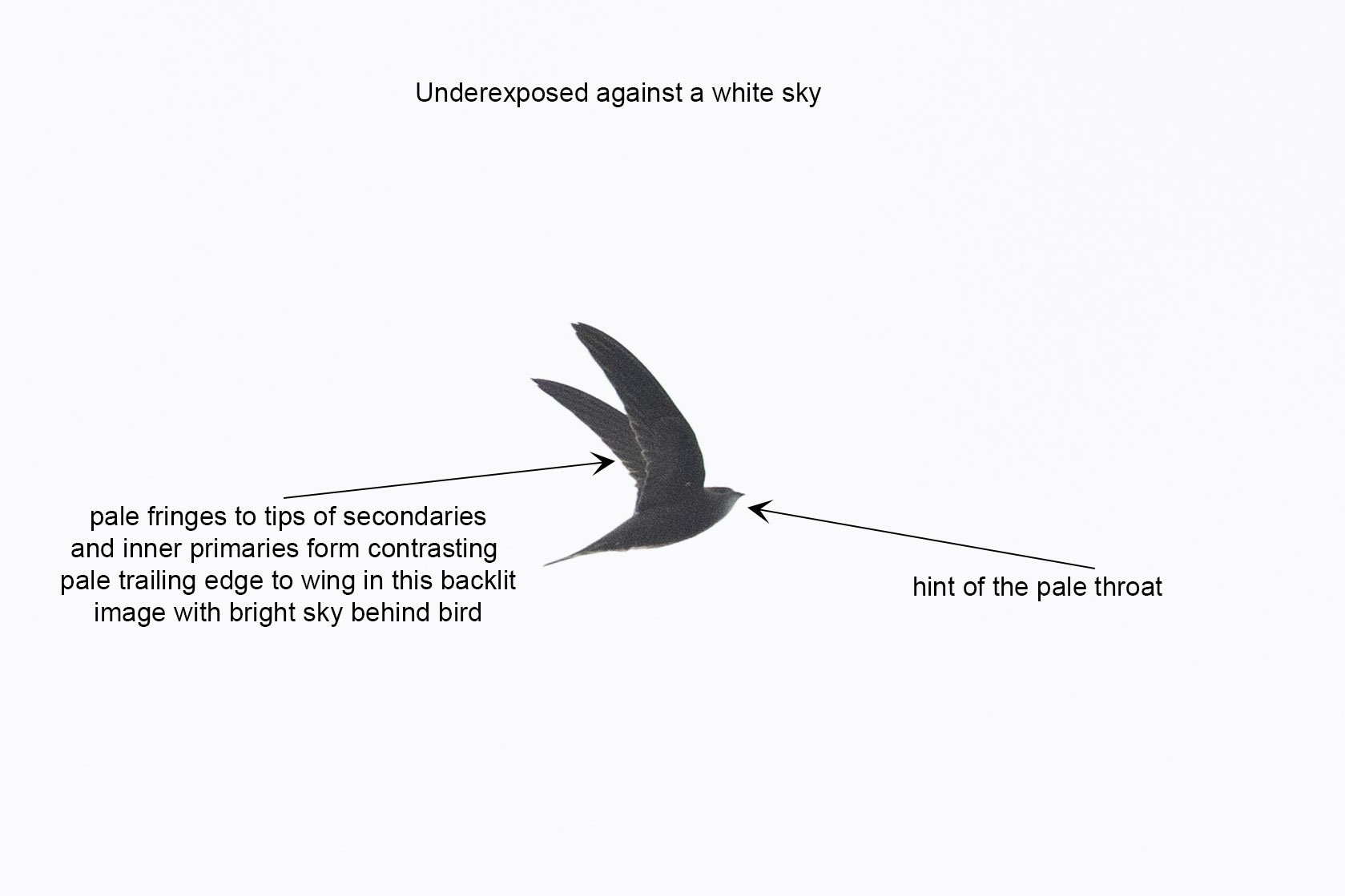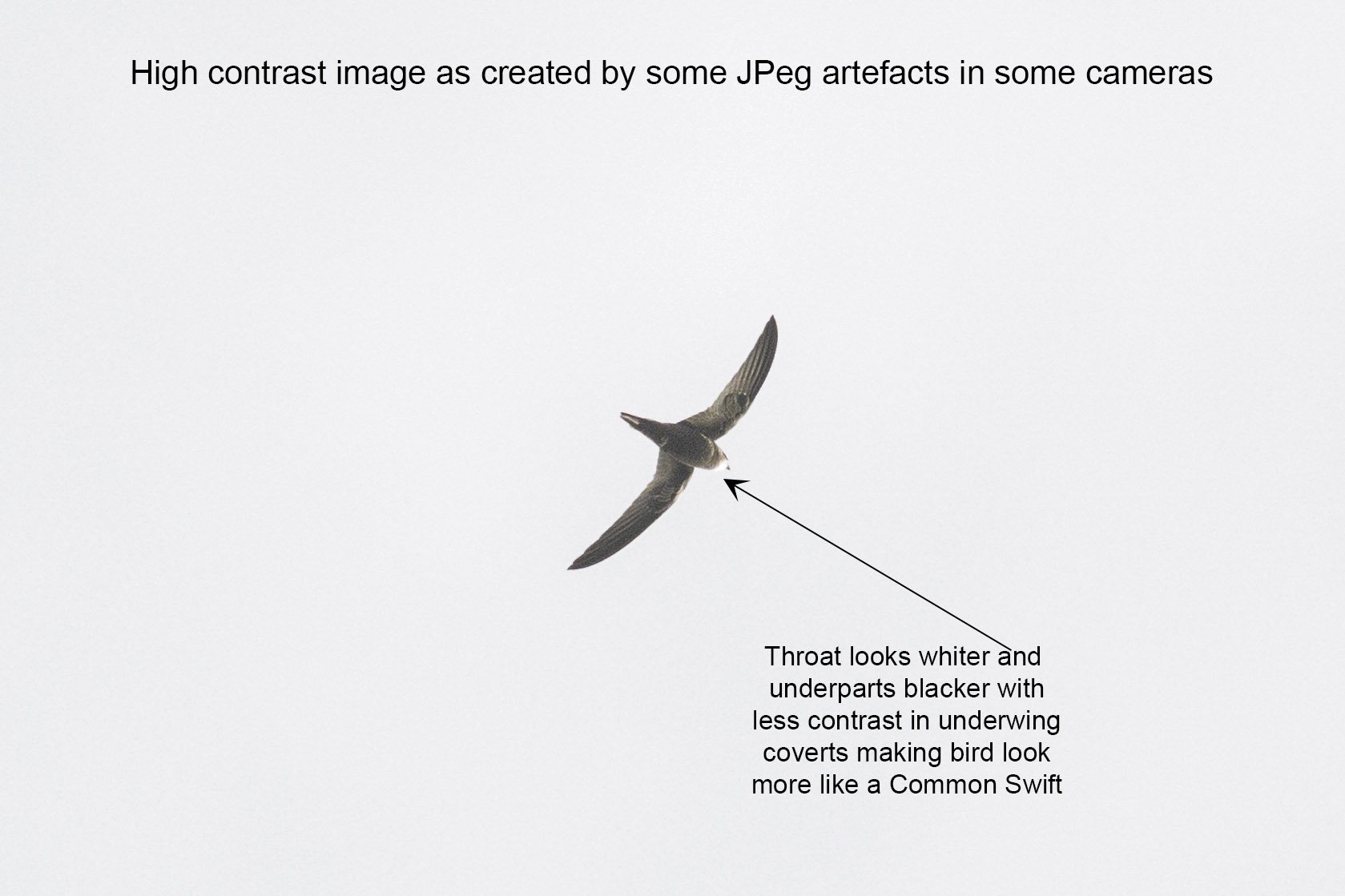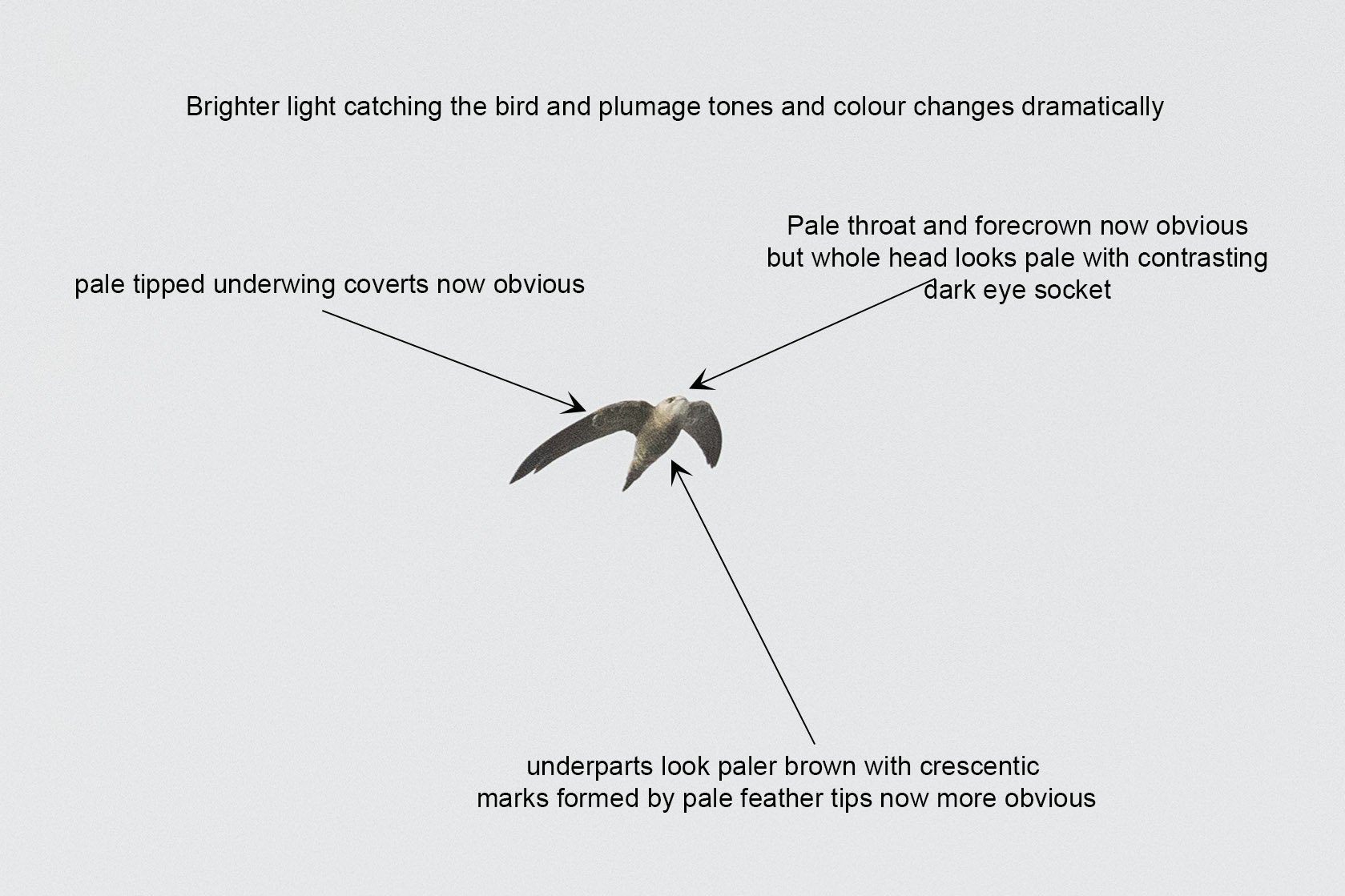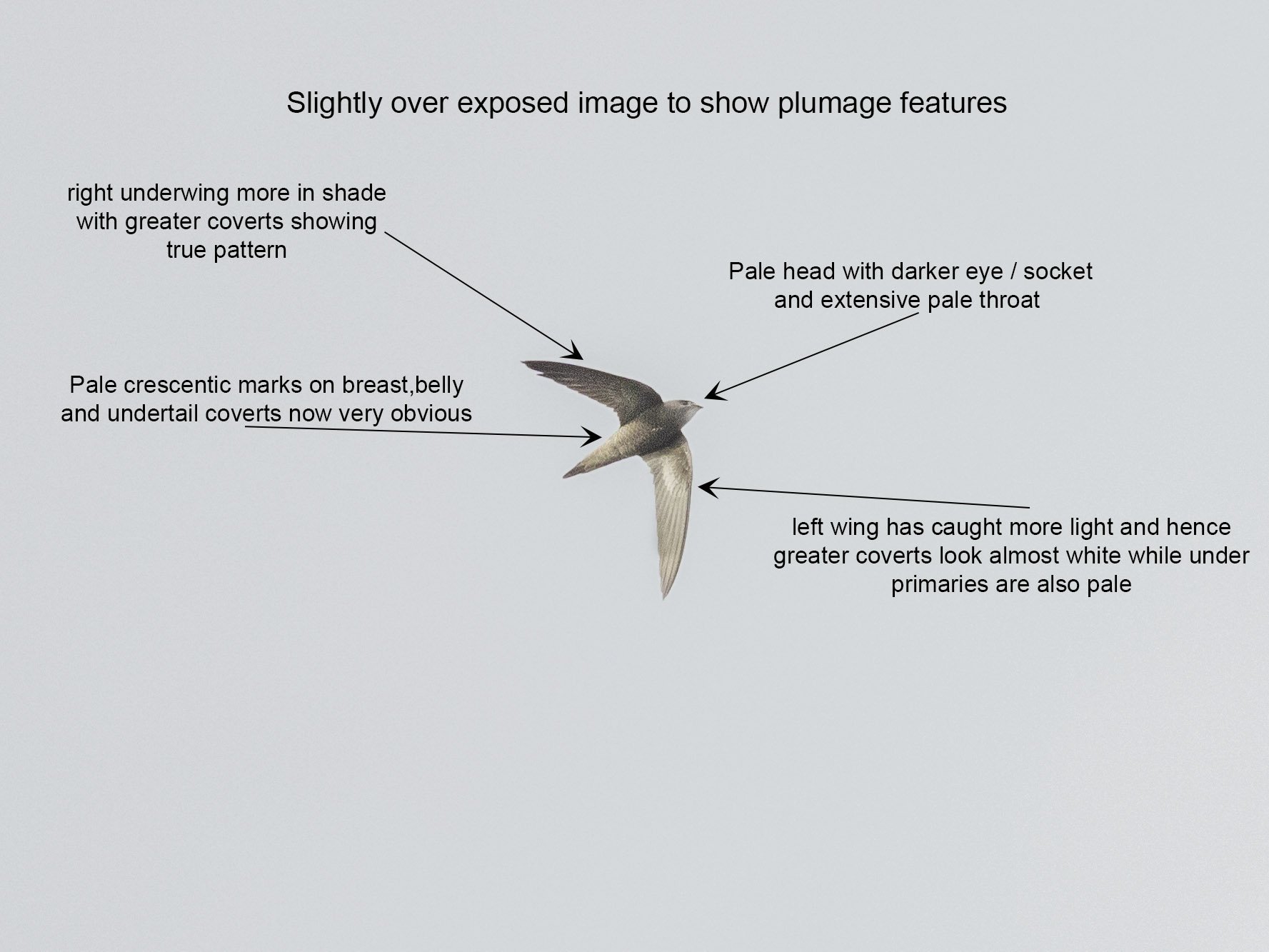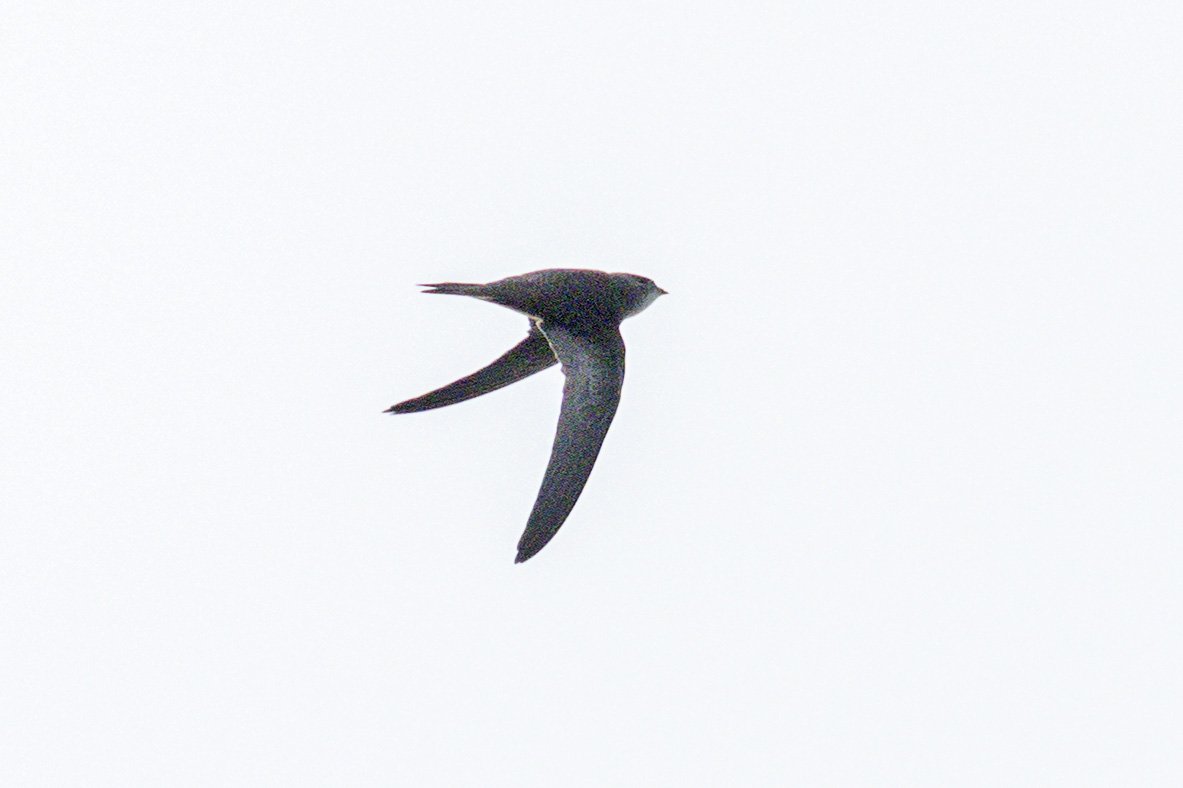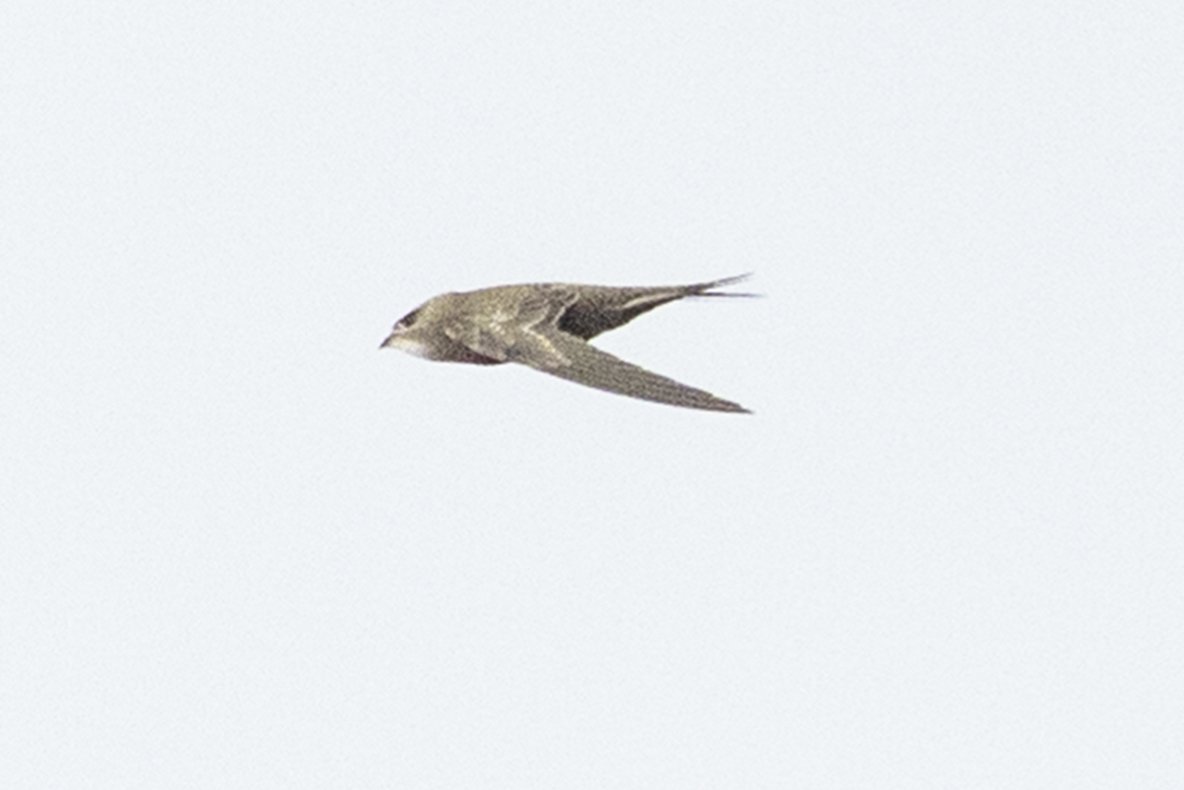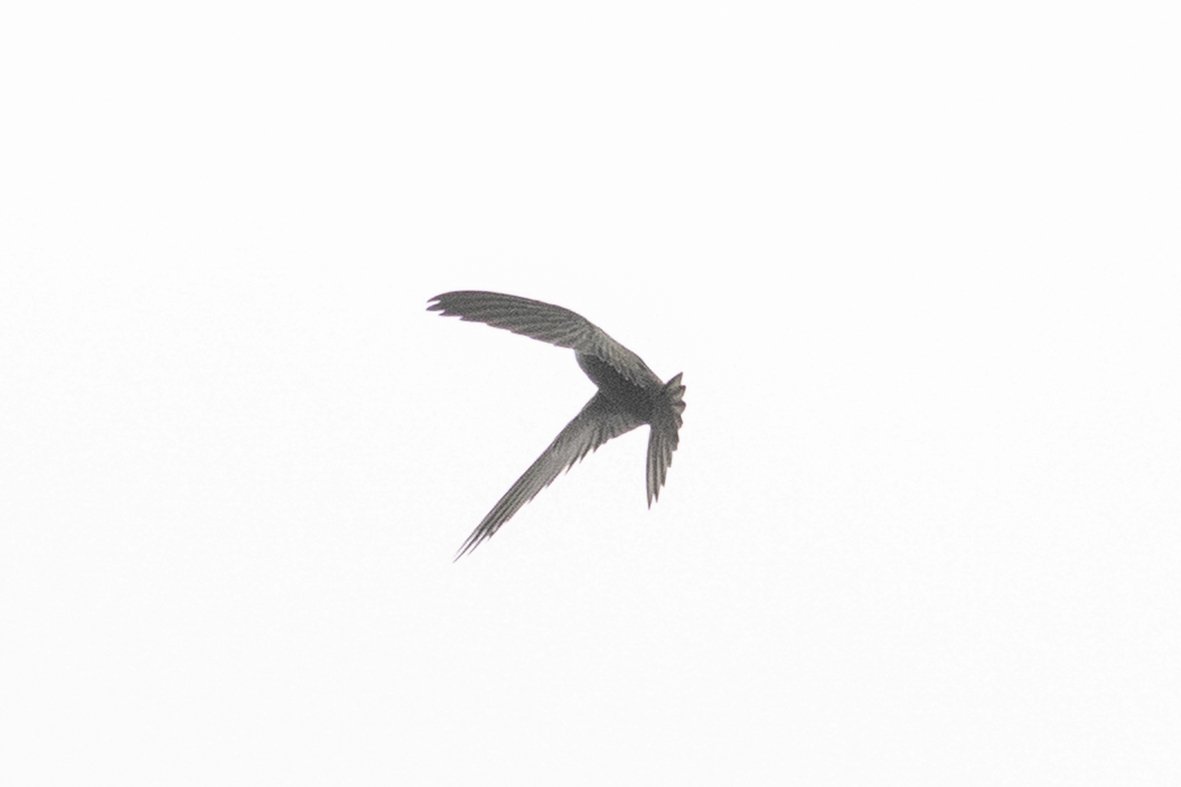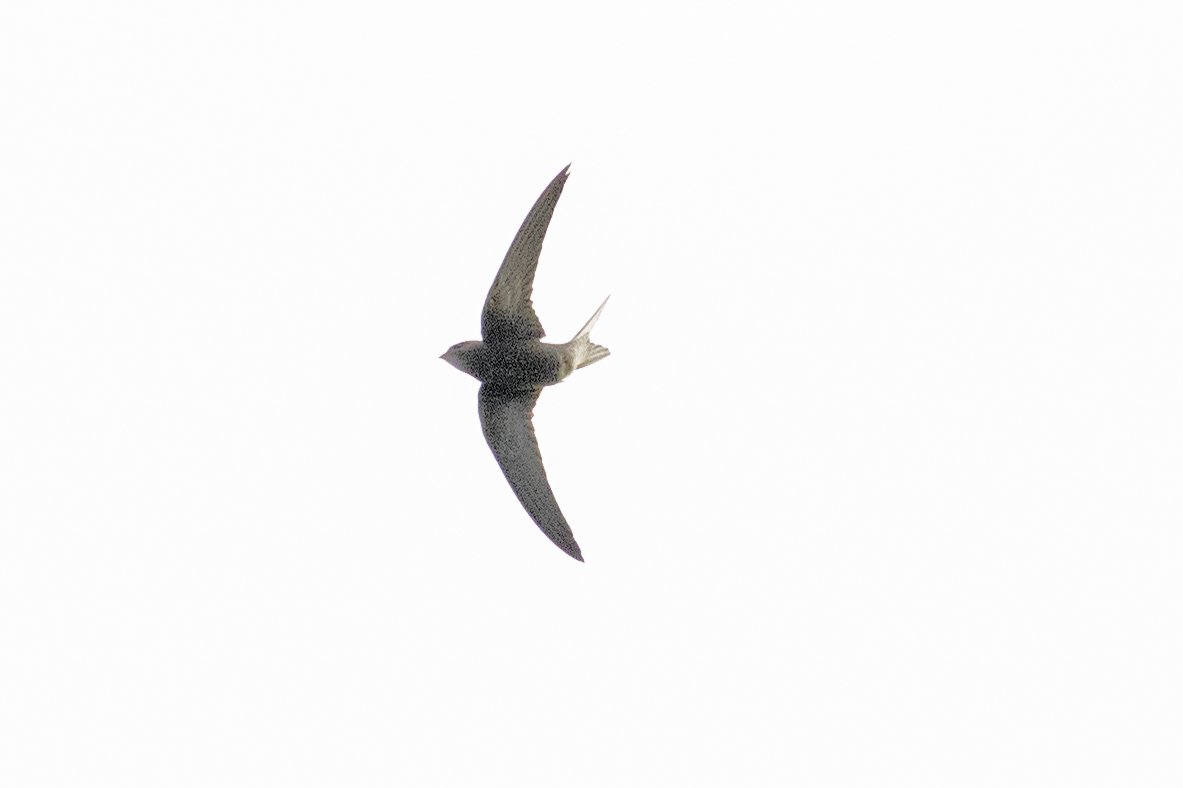Pallid Swifts at Barton
A write up of the events of October 29th 2023 and a chequered history of the status of this species in Lincolnshire
Pallid Swifts in Lincolnshire: a chequered history and personal viewpoint. G P Catley
With no less than FIVE Pallid Swifts recorded in Lincolnshire on October 29th 2023 I decided to take a look back at the history of the species in the county and recount my experiences some of which may resonate with other birders.
The publication of a Poyser classic in the form of Rare Birds in Britain and Ireland by J T R Sharrock in 1976 brought a species to the attention of birders in Lincolnshire. Printed as still pending acceptance but clearly considered to be likely to make the grade was a record of Pallid Swift at Rimac, Saltfleetby – Theddlethorpe on November 6th 1975. The bird seen by the late Lenton Ottoway and Rodney Higgins was duly submitted to BBRC but rejected as a first for Britain. The late autumn date as we now know is typical for the occurrence of this southern species but at the time there would have been no precedent for such a record.
On the 20th of April 1976 I had seen my first identifiable Pallid Swift on the cliffs north of Estartit on the North-east coast of Spain. My notes stated amongst other things that it had “a pale brown back and secondaries” but more of that later. Advancing a year to June 1977 a two-week trip to the Camargue, including a chance encounter with an early West Palearctic Western Reef Heron, ended on the 17th and it was back to working for a living. Six days later undertaking my fortnightly duty of filling kerosene signal lamps on the Barton railway, while walking around the line which led into the Albright Chemical works, now the Waters’ Edge park, binoculars at hand as usual, I stopped to scan an area of reed in a shallow pit. At that precise moment a male Little Bittern jumped up out of the reeds and flew the length of the pit and over a hedge never to be seen again. Now rare bird finding is often a combination of determination, time spent in the field and some skill but I fancy most of all it is a matter of luck or is that fate? What exactly were the chances of me being in that spot and looking that way at the very time that that Little Bittern chose to fly? it was nowhere near enough to have reacted to my presence. But then I suppose you could say that I may well have walked past another 30 in the years that have followed and none has flown at the right time or I have been looking the other way when they did. But this was surely just absolute luck? Or was it fate? The events of June 27th, just four days later maybe reset the balance.
My local patch of the time was Goxhill Marsh and particularly Dawson City, (remember this location) the latter a complex of grazed fields, thorn scrub, open water and reedbeds. Late June is not a good time for finding migrants so I opted as usual to scan through the Swifts present ever hopeful of an Alpine. Almost immediately I found a pale swift, identifiable as such at 50 yards. As unlikely as it seemed, just four days after finding my first UK Little Bittern, here was a Pallid Swift on my local patch. But this was different; with the probably undeserved rejection of the suspected first Pallid Swift for Britain at Rimac on November 6th 1975, there was no accepted UK record! A thorough description was compiled but no camera was to hand. “Noticeably paler than Common Swifts it associated with at up to 50 yards, difference being most obvious on upperparts----Throat and forehead pale whitish very noticeable when bird head-on when had a markedly creamy look to the head. Back and upper forewings pale chocolate brown with scaly markings visible at close range---wing-coverts had pale feather fringes—Overall upperwing colour showed dark leading edge and outer primaries and paler brown secondaries. Underparts same chocolate brown lacking the dark wing linings of Common. Given my previous limited experience of Pallids the description of jizz and build seemed quite pertinent; shape slightly different to Common Swifts with slightly fatter body and more rounded wing tips not so sharply pointed and streamlined as Common Swift—flight appeared slower and more deliberate than Swift and spent most of its time feeding over one area of the bank not going down over the water with the Commons”
The record was submitted to the British Birds Rarities Committee and after long deliberation I received a notification by mail from Mike Rogers, the then secretary who I got to know well in later years serving on BBRC, congratulating me on my first for Britain qualified with: it will go to BOURC for ratification but as they only deal with provenance that would be academic in the case of a swift.
To a bird finder there is surely no greater goal. The euphoria though was short lived. During a circulation to the BOURC a ‘new feature’ of Pallid Swift had come to light---they show a dark and contrasting mantle forming a saddle effect on the upperparts—my bird lacked it and therefore the rejection followed. Was this the first time that BOURC had taken over the identification mantle conferred upon BBRC? It was certainly unusual.
Now everyone who has a record rejected feels a bit miffed for a while but I got over it and I suppose the 1998 Little Swift on my local patch made up for a lack of Alpines over the ensuing 20 years until I duly found an Alpine also on my local patch in May 2009.
In May 1978 a Pallid Swift was found at Stodmarsh in Kent and duly seen by the masses during its nine day stay from 13th – 21st and it was even photographed. So, in spite of two failed Lincolnshire attempts the species was added to the British List. The article detailing the record in British Birds, Pallid Swift New to Britain and Ireland stated “since 1960 there have been at least nine other reports of Pallid Swifts in seven counties of southern and eastern England, west to Avon and north to Humberside, but none has afforded such conclusive views as the Stodmarsh individual”.
Although the number of British records increased slowly with a developing late autumn bias over the ensuing 24 years there were no further Lincolnshire claims until the first accepted county bird was found by John Wright, Kev DuRose and David Jenkins at Skegness on October 23rd 2004. A number of very late birds not seen well enough for specific identification raise the possibility that the Lincolnshire total should have been higher. Two birds in Goxhill Marsh (is it a hot spot?) on October 21st 1976 and October 29th 1982 were in classic rarity filled autumns with a mix of vagrants similar to 2023. A swift species that ranged between Chapel St Leonards and Ingoldmells on October 24th 2004 may well have been the same as the above Skegness bird or maybe a second Pallid but light and distance combined to leave in in the swift sp category / bin.
In spite of the seemingly ever-increasing chances of bumping into a Pallid Swift in the late autumn on the Lincolnshire coast it was another 14 years after the Skegness bird that the second acceptable county bird was seen at Gibraltar Point on November 8th 2018 quickly followed by the third at Goxhill, Dawson City (ring any bells?) on November 11th 2018. A major and unprecedented influx of at least 60 birds into Britain in the autumn of 2022 produced only one acceptable Lincolnshire bird at Mablethorpe on November 16th but a few other swifts avoided identification during the peak late October – November passage period.
Fast forward to late October 2023 and the first reports of Pallid Swifts on the Yorkshire coast and further north suggested that there may yet be a chance of a Lincolnshire bird charitable enough to stick in one location long enough to allow a successful twitch for county listers. After a number of very unproductive visits to the Lincolnshire coast in October I decided on one last blast on the morning of October 28th. Meeting up with N Drinkall we exhausted the potential of Stonebridge to Pye’s Hall without a warbler or anything of note in spite of the south-easterly airflow. A few Robins and thrushes were scant reward and an afternoon at Saltfleet revealed a lot of people and a Woodcock. With more Pallid Swifts in Yorkshire, I determined to find one locally on the 29th setting off from Waters’ Edge to walk to Barrow Haven, a swift hot -spot. WhatsApp news of a Pallid Swift at Gib, complete with image, raised the eternal conundrum to go for a swift or not; if you do its gone if you don't it sticks. With the local pits’ track record there would surely be a Pallid Swift at Barton sooner or later, it was a hard task trying to convince myself and after four hours and four miles on a now aching new knee and only an odd looking long-billed Knot as reward, I even missed four Waxwings that Andy saw fly past me, it seemed my weekend was indeed one to forget. After lunch trying to decide whether it was worth a trip down the road to Far Ings another WhatsApp message from Andy; someone had seen a swift sp at Far Ings!! On my way and into Far Ings car park where Darren Wozencroft has found the bird but it’s drifted off east. Fly back to Pursuits Pit and have a quick scan (big mistake) but cannot see anything, then try progressively further east to Waters’ Edge, think where a swift might find a concentration of insects and check the trees at WE then walk to the sewage works; by now Wayne and Claire Gillatt are on their way so suggest they check Pursuit pit again and I walk off with the ever aching knee towards sailing pit where I spent all morning. Another bad mistake – phone rings its Claire we’ve got it on PP. S—t – walk very fast almost run the kilometre back to the Haven on the new knee puffing and panting while trying to get the news to others nearby on the phone and realising that 5 miles on a new knee is not a good idea. Claire gratefully picks me up and eventually at Pursuits Pit WG is watching it through his scope but views are still distant and it starts to pee down – just what you need. With bins covered in rain and camera refusing to find a micro dot in grey sky frustration levels are growing. But gradually it comes closer and with the rain stopping and light improving WG can see all the features through the scope but my initial pictures are dire. Then the cloud thins and with some brightness it transforms into a classic Pallid Swift at last! For the next hour the Pallid Swift performed at varying distances but always high up catching insects until about 16:00 when WG, CG and ND piped up on the phone there are two together near the bridge! Both birds then fed over the foreshore for about 15 minutes gradually drifting further west to Old Cements before with an increasing cool breeze from the south-west they drifted off out over the Humber.
Amazingly while watching the initial Pallid my phone was ringing with James Siddle trying to tell me about the two Pallid Swifts at Huttoft! Four synchronously in Lincolnshire – will that ever be repeated? Will Pallid Swift be the new Cattle Egret, maybe not a good analogy but with big autumn arrivals in two successive autumns the chances of finding one in late October – November seems a distinct possibility. It’s on my patch list but still need to self-find one – always a challenge to be accomplished.
Thanks to Darren for the find and getting the news out quickly enough for us all to get it; the decision to miss a stressful drive to Gib paid off as hoped but in all honesty you could not have predicted that being the outcome.
GPC
The images below were all taken on the afternoon of the 29th; they are not great! but do hopefully show the main features and jizz of the birds as shown on a dull October afternoon with mainly grey clouds - not how the perceived shape of the birds changes with posture and speed of flight and how certain features stand out more as they catch what little light there was available. All taken at ISO 5000 to 6400 hence they are somewhat noisy.
Identification of Pallid Swift is always tricky but much more so in the late autumn in a vagrant context when typically light conditions are poor and distance and limited viewing times mean that clinching identification features is a real challenge. While watching the two birds at Barton I took around 1000 images in differing light conditions and from different angles but always looking up at the birds as they never came down low to feed. Below are a series of annotated images some with comments all of the same birds and in most cases of one of the two as it was seen for the longest period of time. They represent typical views captures in split second frames on the camera and typically show more detail than it is possible to ascertain with optics alone. LIGHT is the key to seeing what are at best subtle features on fast flying birds and I hope this is shown in some of the series below. Click on the images to enlarge though note that all images were very small due to distance from the birds.

